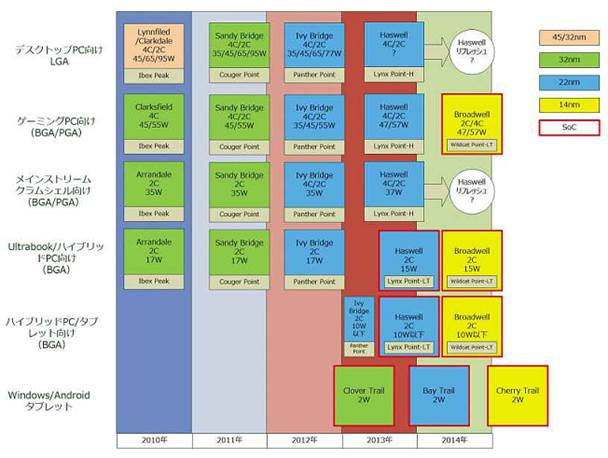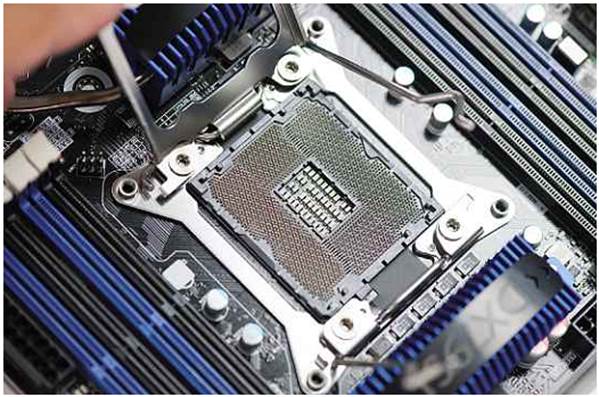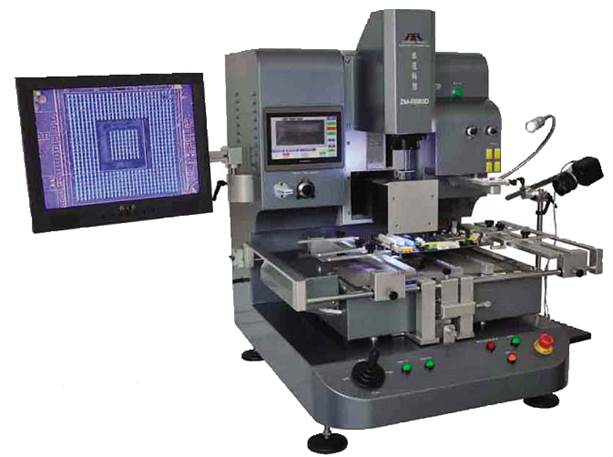We examine the changes that might herald a
new Intel - one that’s not as enthusiast-friendly as we’ve become accustomed to
Intel has ruled the roost in computing
silicon since the early eighties, and capitalising on its x86 architecture
(together with partners like Microsoft) it has built a massive technology
empire. Nothing lasts forever, though, and with an ever-changing technological
topology shifting beneath its very feet, is Intel planning to do something
drastic for the longer term viability of the company?

These
Intel Roadmaps suggest that Haswell will be the last of the desktop processors
to be available in a socket, but is that true?
A Changing World
Most people have grown up with Intel
powering the world’s computers. ‘Intel Inside’ has become an assumption most
people make upon seeing a system because, apart from some very odd times in the
past 30 or so years, Intel always made the best desktop PC processors. What’s
more, it has largely dominated the mobile computing space too, until recent
times and the growth of ARM in the tablet and smartphone markets.
That’s not to deride AMD’s attempts to
challenge it for desktop supremacy, and that company’s undoubted influence on
the technology we have now. The thing is, at no point did it ever look like
Intel would take the runners-up medal in the race to be the biggest chip maker
in desktop computers, and AMD has never managed to show it a clean pair of
heels.
What’s fascinating about Intel is that it
built a simple but effective chip selling business and, off the back of the
success of the IBM PC, rode it to billions of chip sales and many more billions
in yearly profits. Unfortunately, having all-but neutralized AMD, it then sat
back to enjoy a few decades of ‘business as usual’, and somewhat failed to
notice how the landscape of consumer computing was subtly changing.

LGA
2011 has a horribly complicated socket. Perhaps Intel isn’t being daft in
trying to do away with all these potential points of failure
Intel has had a few diversions away from
the venerable x86 format, most notably The Disaster That Shall Not Be Discussed
(aka Itanium) and a low power offering in the form of the Atom. The problem is,
the Itanium has become a technological funeral pyre on which HP is slowly being
roasted, while the Atom didn’t exactly set anyone’s world alight. It turns out,
though, while the Atom was wrong product, it moved the company in the right
direction - because the (then) unseen assassin that was ready to strike from
the shadows was the company formerly known as Advanced RISC Machines (now ARM
to its friends, and its enemies), and its amazing low power devices.
The launch of the Apple iPhone back in 2007
started a chain of events that Intel never anticipated, and propelled ARM from
being a company that historically came from Acorn and the BBC Micro to
challenge Intel’s domination of the world processor market.
“If it is true, then this is the most
radical change of direction that Intel has ever made, though that might also
reflect the seriousness with which the decline of the desktop market is viewed
internally”
It’s not that ARM itself makes all the
chips that go in phones, tablets, cameras, NAS boxes and Raspberry PI’s, it
actually licenses its tech to a variety of companies that make their own
flavours of its special sauce. It’s proving to be a very profitable recipe,
that’s for sure.
In contrast, it’s taken Intel five years to
enter the smartphone market. The distance between it and ARM was then put in
sharp relief when press releases with headlines like ‘Intel Cracks Smartphone
Apps Processor Market’ heralded it’s capturing of a record 0.2% share of that
market in 2012 (after delivering precisely 0% in 2011. ‘Scuffs’ is probably a
better word than ‘Cracks’ to describe its success in this sector so far. By its
own standards, its a long way from domination, and it has also failed to make
much of a dent on the tablet market either, which is again entirely dominated
by ARM-derived products.
With the momentum moving away from the
company, it’s not surprising that it’s making plans to wrestle back the
initative.
2013, And All Haswell
Roadmaps are a tasty source of information,
if you’re adept at reading between the press releases and filling in the
obvious omissions yourself. A fine example of the Intel’s approach to such
activities, is its Desktop Platform Roadmap, covering the period Q1 2012 to 1H
2013.
It covers the last of the Sandy Bridge
generation, and the continuation of the Ivy Bridge range we’re currently
enjoying, before priming us for the introduction - sometime between March and
June of next year - of it’s next step forward: ‘Haswell’. Eagled-eyed readers
of the map quickly noticed that, while Ivy Bridge covers LGA 1155 and Sandy
Bridge-E takes the LGA 2011 high ground, Haswell is to be given a whole new
Socket (1150). Quite why it needs to dispense with five pins isn’t obvious, but
on the surface it could be said to adhere to Intel’s modus opperandi of
changing sockets on a regular basis to keep motherboard manufacturers in
business.

This
is the machine you need to either install or remove a BGA packaged CPU, which
most people don’t own
This raised few eyebrows, but more
speculation spawned from the release of a Japanese chart showing that Haswell
itself will be followed by a new chip ‘Broadwell’ in 2014 (reportedly on an
amazing new 14nm fabrication). What socket will Broadwell be on? Well the chart
says ‘SoC’, which means ‘System on a chip’, which infers that this CPU won’t be
on a socket because it carries many of the support chips with it and can be
surface-mounted to a motherboard. The technical term for this is a ball grid
array (BGA), and that’s the same technology that Intel has used with the Atom,
which isn’t replaceable by a user.
If true, then Haswell’s legacy could be to
represent the very last socketed desktop processor produced by Intel. Beyond
that line, you could well be buying an entirely new motherboard in order to upgrade
the processing power of a system.
The general plan with Broadwell is that the
chip will carry the CPU, GPU and integrated memory controller (as with current
designs) and that it will be coupled with a Wildcat Point input/output
controller. That chip will be created with various power envelopes for mobile
and desktop use, and it will dictate what the Broadwell chip is capable of
doing in terms of clock speed and turbo mode.
If this really is the intention then it
represents the commoditisation of the PC into an appliance, and potentially the
end of enthusiast -built and tweaked systems entirely.